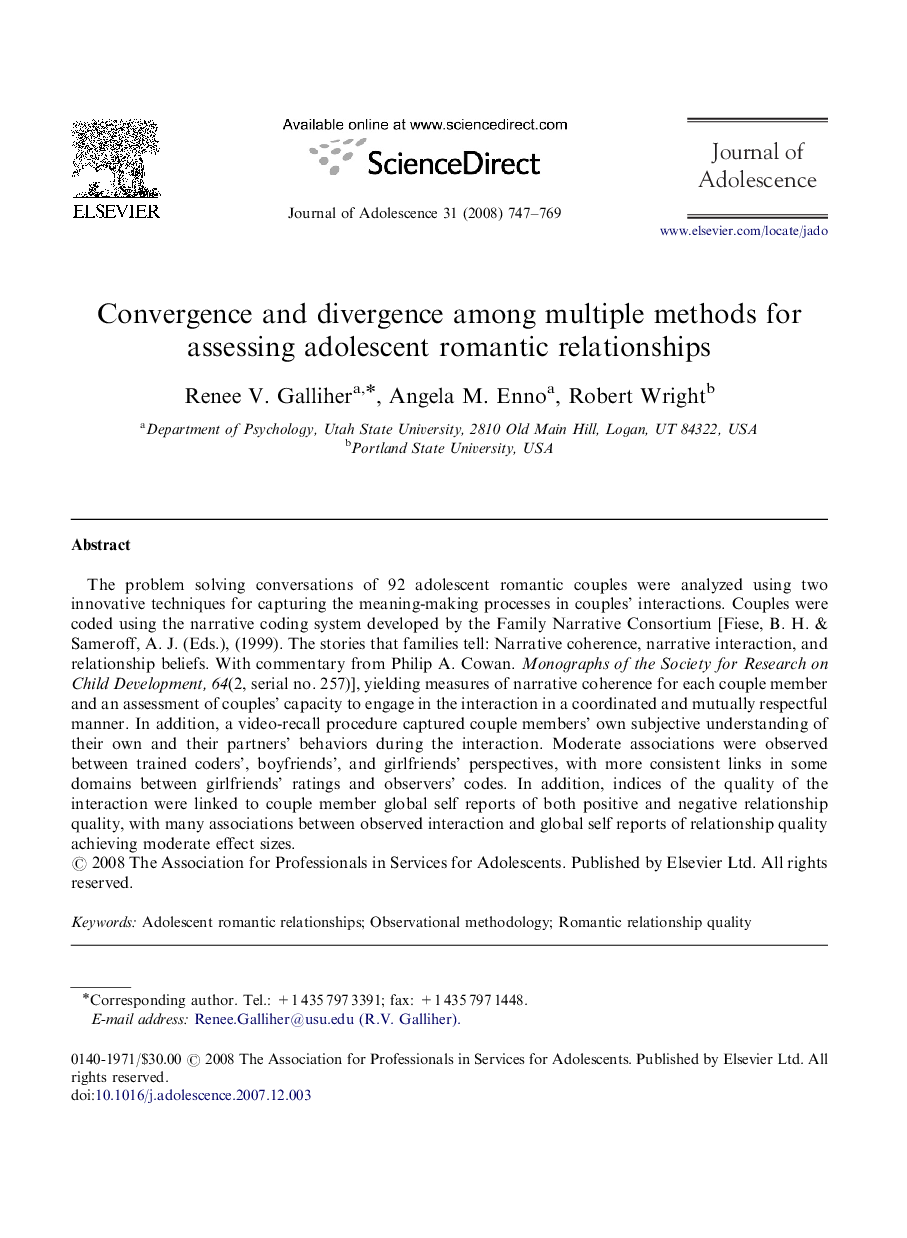| Article ID | Journal | Published Year | Pages | File Type |
|---|---|---|---|---|
| 881288 | Journal of Adolescence | 2008 | 23 Pages |
The problem solving conversations of 92 adolescent romantic couples were analyzed using two innovative techniques for capturing the meaning-making processes in couples’ interactions. Couples were coded using the narrative coding system developed by the Family Narrative Consortium [Fiese, B. H. & Sameroff, A. J. (Eds.), (1999). The stories that families tell: Narrative coherence, narrative interaction, and relationship beliefs. With commentary from Philip A. Cowan. Monographs of the Society for Research on Child Development, 64(2, serial no. 257)], yielding measures of narrative coherence for each couple member and an assessment of couples’ capacity to engage in the interaction in a coordinated and mutually respectful manner. In addition, a video-recall procedure captured couple members’ own subjective understanding of their own and their partners’ behaviors during the interaction. Moderate associations were observed between trained coders’, boyfriends’, and girlfriends’ perspectives, with more consistent links in some domains between girlfriends’ ratings and observers’ codes. In addition, indices of the quality of the interaction were linked to couple member global self reports of both positive and negative relationship quality, with many associations between observed interaction and global self reports of relationship quality achieving moderate effect sizes.
